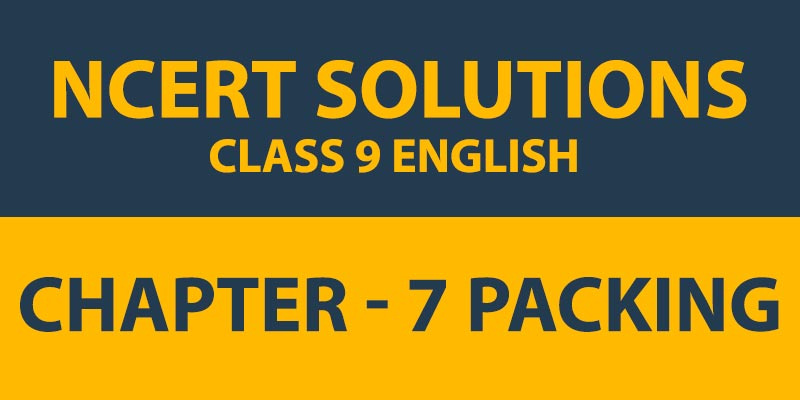This context is about how to tell wild animals to brief from 10th Class English. Its author is Carolyn Wells. The author delineates the wildlife vividly and in a very lively manner. If anyone gets a chance to go into the forest in Asia and if a large terrifying animal comes in front of, then we must know about them for their identity. If the wild animal is having black stripes on yellow hide then it is Bengal tiger. Hence, if the animal whose wrap is covered with spots, jumps at us and starts eating then it is a leopard. A detailed explanation of the poem along with the meanings of stiff words. Also, the explanation is followed by the literary devices used and a brief of the Poem. All the exercises and Answers and Questions given at the back of the chapter have been included.
How to tell wild Animals Class 10th NCERT
How to Tell Wild Animals 10th Class English First Flight Poem 4 – Detailed explanation of the poem along with meanings of stiff words. Also, the explanation is followed by the literary devices used and a Summary of the Poem. All the exercises and Answers and Questions given at the back of the chapter have been covered.
If ever you should go by chance
To jungles in the east;
And if there should to you advance
A large and tawny beast,
If he roars at you as you’re dyin’
You’ll know it is the Asian Lion…
In this stanza, the poet explains an extreme situation to identify a lion. The poet says that if the roar of the animal is so fearsome that you feel like you are dying then you can be sure that you are near a lion.
Or if sometime when roaming round,
A noble wild beast greets you,
With black stripes on a yellow ground,
Just notice if he eats you.
This simple rule may help you learn
The Bengal Tiger to discern.
In this stanza, the poet tells us what to do if we see a wild animal with black stripes on yellow body. If the animal starts eating you then you can be sure that it is a tiger. Perhaps, it is better not to wait to be a tiger’s lunch to identify it.
If strolling forth, a beast you view,
Whose hide with spots is peppered,
As soon as he has lept on you,
You’ll know it is the Leopard.
’Twill do no good to roar with pain,
He’ll only lep and lep again.
In this stanza, the poet asks us about what we think if we happen to see an animal with spots which give it a salt and pepper appearance. He tells us to wait until the animal leaps on us. Because no matter how hard we cry, it will continue pouncing on us. So, be careful and don’t allow it to leap on you.
If when you’re walking round your yard
You meet a creature there,
Who hugs you very, very hard,
Be sure it is a Bear.
If you have any doubts, I guess
He’ll give you just one more caress.
In this stanza, the poet says that your years are thought to be good wrestlers and can give a really tight hug. Although a friendly hug is referred to as a bear hug. But if a real bear will hug you, then it may not feel good and friendly at all.
Though to distinguish beasts of prey
A novice might nonplus,
The Crocodile you always may
Tell from the Hyena thus:
Hyenas come with merry smiles;
crocodiles
But if they weep they’re Crocodiles
In this stanza, the poet explains that some animals are famous for their weird behaviour. For example, a crocodile is said to shed tears while eating its Prey. A laughing hyena’s voice resembles a human laughing sound. So don’t wait for a Hyena to laugh or for a crocodile to weep.
The true Chameleon is small,
A lizard sort of thing;
He hasn’t any ears at all,
And not a single wing.
If there is nothing on the tree,
’Tis the chameleon you see.
A Chameleon or Garden lizard is an expert at camouflage. If you are unable to see a thing on the tree then the change chances are that a Chameleon is sitting there. As it changes colour as per its surrounding it is difficult to identify. This capacity of camouflage helps the lizard in saving it from hunters.
NCERT Question Answers for How to tell Wild Animals Class 10 English Poem
Q1. What are the distinctive characteristics of the Asian Lion as given in the poem?
A. The Asian Lion is a big beast. He is brownish-yellow in color. He roars. The sound is terrifying to hear. This makes one almost die due to mighty fear. He is found in the forest in the eastern countries of Asia. That’s why he knows n Asian Lion’.
Q2. How does the Bengal Tiger look? What is so distinct about him?
A. The Bengal Tiger roams in the forest freely. He is the king of animals. He looks noble. He has black stripes on a yellow background. When this tiger notices someone he tries to eat him. He is so terrifying with his teeth and jaw.
Q3. How does a leopard behave when he sees someone?
A. A leopard has spots on his conceal. These are black in color on his yellow skin. He is a mighty runner. As soon as he sees someone he leaps over him at once. He attacks him and starts eating. He is so powerful and terrifying.
Q4. How does the poet describe the bear?
A. The poet describes the bear in a humorous way. As soon as the bear comes near a human being, he embraces him tightly. Then he starts to make his hug tight. He starts squeezing one to death. He will touch him lovingly. That’s why it is called‘a bear’s hug’.
Q5. How does the poet describe the crocodile and a hyena?
A. The poet describes the hyena and the crocodile humorously. The hyena has happy smiles on its face. But this is not so. The hyena’s face is made like this.
Q6. How does the poet generate humor in the poem?
A. The poet generates humor by describing different beasts of prey differently. It is through the use of emotions and words. The Bengal tiger is nevermore‘noble’ in his heart. The leopard kills his prey in moments. His crying won’t save him. The bear’s hug is never loving. The hyena nevermore smiles happily.
Q7. Does ‘Dyin’really rhyme with ‘lion’? Can you say it in such a way that it does?
A.No, Dyin does not rhyme with ‘lion’.if we change the pronunciation of the lion by speaking it as ‘lying’ then it may rhyme with the word ‘dyin’.
Q8. How does the poet suggest that you identify the tiger and the lion? When can you do so pursuance to him?
A. A lion is a beast and tawny big. A Bengal Tiger has black stripes on its yellow fortification. A lion roars when it falls over its prey, while a tiger attacks silently. We can recognize the 2 while roaming in the jungle.
Q9. Do you think the words lep and’ lept in the 3rd stanza are spelled right? Why does the poet spell them like this?
A. The words lep’ and lept’ are not spelt right. The correct spelling of the words, lept’ is leapt and ‘lep’ is a leap. The poet has intentionally spelled them wrong to create a sense of humor.
Also See:
- Dust of Snow English Poem 1 Summary, Explanation
- Fire and ICE English Poem 2 Summary, Explanation
- A Tiger in the Zoo Poem 3, Summary, Explanation, Solutions
- How to tell Wild Animals Poem 4
- The Ball Poem 5 Summary, Explanation
- Animals Poem 6, Summary, Explanation, Solutions
- The Trees Poem Poem 7, Summary, Explanation, Solutions
- Mijbil The Otter Chapter 8 Class 10 English
- Madam Rides the Bus Class 10 English Chapter 9
- Glimpses of India Chapter 7 English Class 10
- A Letter to God Class 10 English First Flight Chapter 1
- Two Stories About Flying Class 10 English First Flight Chapter 3
- Long Walk to Freedom Class 10 English First Flight Chapter 2
- The Diary of Anne Frank Class 10 English First Flight Chapter 4
- The Hundred Dresses Part 1 Chapter 5 Class 10 English First Flight
- The Hundred Dresses-II Chapter 6 Class 10 English First Flight





